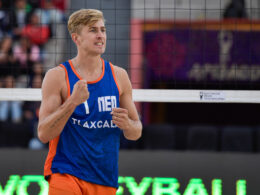Less than two years after the release of Overwatch 2, game director Aaron Keller has announced that Blizzard is now open to reversing one of the series’ biggest–and most contentious–decisions: its shift to 5v5 gameplay.
Keller shared the news in his latest Director’s Take, a regular blog he publishes to help keep fans up to date on key decisions. In it, Keller explained the reasons why the studio pivoted away from Overwatch’s 6v6 gameplay, as well as laid out a rough plan to implement 6v6 battles back into the game through a “series of events” most likely taking place “several seasons” down the road.
“The community has, juuuust once or twice, suggested a test. ‘Why not put various forms of 6v6 in the game in order to gauge the results?’ We agree, and based on your feedback, we’re exploring how we can test different forms of 6v6 in the game to gauge the results,” Keller wrote.
If all these plans sounds a bit loose, it’s because they are. As for why we don’t have concrete dates or event names yet, Keller was quick to explain that the transition back to 6v6 is somewhat of a logistical nightmare for “reasons that may not be readily apparent.” To attempt to explain these reasons, he offered up a “Historical Overview” of Overwatch as well as several paragraphs outlining why he believes 5v5 best suits Overwatch 2.
According to Keller, the introduction of Hero Limits–and subsequently Role Queues–in the original Overwatch played a large role in the team’s decision to make Overwatch 2 5v5. Data collected by the team revealed that queue times were dramatically shorter when only ten players were needed to start a game–particularly for those playing the game’s most popular role, Damage. Keller also explained that the switch was made to offer “greater individual agency” to players.
“Many times, fights in 6v6 couldn’t resolve until ultimate abilities came online. Correct that, until ultimate combos could be executed to break through two tanks worth of mitigation supported by high, uncontested healing output,” Keller wrote. “The world of 6v6 could have really high, highs, but reaaaally low, lows. One of the design goals of 5v5 was to try to raise that floor, even though it was at the expense of some of some of those high moments.”
Keller went on to explain that “tank synergy wasn’t always fun,” and that the inclusion of two tanks on a team could “absolutely grind [a game] to a halt.” Seeing as Overwatch 2 is more focused on being a fast-paced FPS now, 5v5–and the elimination of one of the game’s two tank roles–felt vital to executing that idea. He also noted that it was simply harder to follow 6v6 combat, as “tracking nine other players is easier than 11.” Keller called the switch to 5v5 “a bit more cognitively manageable.”
Despite all of this, however, Keller admits there were plenty of things he enjoyed about 6v6, such as its charmingly chaotic energy. He also stated that the stakes perhaps felt a bit lower in 6v6, as an extra player mitigated the damage caused by someone “performing poorly.” Naturally, lower stakes can lead to players experiencing more fun.
And yet, pivoting back to 6v6 doesn’t seem entirely simple. The largest reason for this, Keller wrote, is that they need to implement the 6v6 tests in a way that “allows the game to have optimized technical performance (I’m referring to framerate and memory constraints) with 12 players in a match.”
“There have been quite a few upgrades and additions to Overwatch 2 that have an impact on the performance of the game. These range from new features like allied outlines and enabling healer vision by default, the addition of more technically demanding hero kits, as well as visual upgrades to UI, heroes and maps,” Keller explained. “In a 6v6 setting, these upgrades can have significant impacts for our players, causing the game to underperform on older systems. Overwatch is a fast-paced game, and maintaining a game that runs smoothly across all our platforms is important for the player’s experience. While a limited time test could arrive sooner, the team is still investigating exactly how long it would take to permanently increase performance across the game. This would be a large effort that would most likely take at least several seasons to accomplish.”
Keller also noted that another issue “that still gives [him] anxiety about opening this Pandora’s Box” is queue times. Keller concluded that gathering data from these tests–particularly data regarding queue times, overall performance, and player feedback–will be incredibly valuable.
“We would reflect carefully on the learnings from whatever test we run and explore how to best give players what’s being asked for,” Keller said. “Whether that’s a world of 5v5, 6v6 or even both, is for future us to figure out.”







